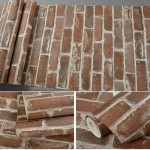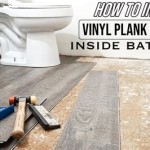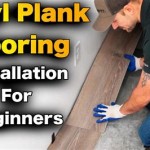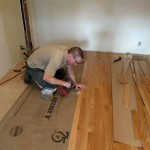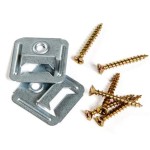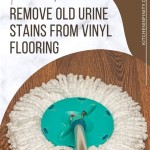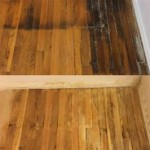Smooth or Textured Laminate Flooring: A Comprehensive Comparison
Laminate flooring has become a popular choice for homeowners seeking an affordable, durable, and aesthetically versatile flooring option. One of the key decisions to make when selecting laminate flooring is whether to opt for a smooth or textured finish. Both smooth and textured laminate flooring offer distinct advantages and disadvantages, making the choice dependent on specific needs, preferences, and the desired aesthetic of the space.
This article will provide a comprehensive comparison of smooth and textured laminate flooring, exploring their characteristics, benefits, drawbacks, and suitability for different applications. Understanding these nuances will empower individuals to make informed decisions that align with their budget, lifestyle, and design aspirations.
Understanding Smooth Laminate Flooring
Smooth laminate flooring is characterized by its uniformly flat and even surface. Its manufacturing process typically involves applying a visual layer over a core board, followed by a protective wear layer. This wear layer is typically smooth, offering a consistent and polished appearance. The visual layer can replicate various materials, including wood, stone, and tile, providing the desired aesthetic without the texture inherent in the natural material.
The primary advantage of smooth laminate flooring lies in its ease of cleaning and maintenance. Its smooth surface does not harbor dust, dirt, or debris, making it simple to sweep, vacuum, or mop. Spills and stains are also easily wiped away, reducing the risk of permanent damage. This makes smooth laminate flooring an excellent choice for households with pets, children, or individuals with allergies.
Another benefit of smooth laminate flooring is its versatility in design. It can seamlessly complement various interior design styles, from modern and minimalist to traditional and contemporary. Its clean and uncluttered appearance creates a sense of spaciousness and light, making it suitable for smaller rooms or areas with limited natural light.
However, smooth laminate flooring can also be slippery, especially when wet. This can pose a safety hazard, particularly for elderly individuals or young children. To mitigate this risk, it is essential to choose laminate flooring with a higher slip-resistance rating or to use area rugs in areas prone to moisture.
Another potential drawback of smooth laminate flooring is its lack of texture, which some may perceive as less realistic compared to textured options. While the visual layer can effectively replicate the appearance of natural materials, the absence of texture can make it appear less authentic. Additionally, smooth laminate flooring may show imperfections more readily than textured options, as minor scratches and dents are more visible on a smooth surface.
Exploring Textured Laminate Flooring
Textured laminate flooring distinguishes itself with its tactile surface that mimics the grain patterns, ridges, and imperfections found in natural materials like wood or stone. This texture is achieved through embossing, which involves pressing a textured plate onto the wear layer during the manufacturing process. This creates a three-dimensional effect that enhances the realism and visual appeal of the flooring.
The primary advantage of textured laminate flooring is its enhanced realism and aesthetic appeal. The texture adds depth and dimension to the flooring, making it appear more authentic and visually captivating. This is particularly desirable for individuals seeking to replicate the look of hardwood or natural stone without the associated cost and maintenance requirements.
Furthermore, textured laminate flooring offers improved slip resistance compared to smooth options. The texture provides increased grip, reducing the risk of slips and falls. This makes it a safer choice for families with children, elderly individuals, or those living in areas prone to moisture.
Another benefit of textured laminate flooring is its ability to conceal minor imperfections. The texture helps to camouflage scratches, dents, and dirt, making them less visible. This can extend the lifespan of the flooring and reduce the need for frequent maintenance. This is particularly advantageous in high-traffic areas or households with pets.
However, textured laminate flooring can be more challenging to clean and maintain compared to smooth options. The texture can trap dust, dirt, and debris, requiring more thorough cleaning methods. Sweeping or vacuuming alone may not be sufficient to remove all the dirt, necessitating the use of a damp mop or specialized cleaning products.
Additionally, textured laminate flooring may not be suitable for all interior design styles. Its rustic and natural appearance may clash with modern or minimalist aesthetics. It is essential to consider the overall design scheme of the space before selecting textured laminate flooring to ensure a cohesive and harmonious look.
Key Considerations When Choosing Between Smooth and Textured Laminate
Choosing between smooth and textured laminate flooring requires careful consideration of several factors, including budget, maintenance requirements, aesthetic preferences, and safety concerns. There is no universally "better" option; the ideal choice depends on the specific needs and priorities of the individual.
Maintenance and Cleaning: If ease of cleaning and maintenance is a primary concern, smooth laminate flooring is the preferable choice. Its smooth surface makes it easy to sweep, vacuum, and mop, minimizing the time and effort required for cleaning. Textured laminate flooring requires more thorough cleaning to remove dirt and debris trapped in the texture.
Aesthetic Preferences and Design Style: If seeking a realistic and visually appealing flooring option that mimics the look of natural materials, textured laminate flooring is the better choice. The texture adds depth and dimension, enhancing the authenticity of the flooring. Smooth laminate flooring offers a cleaner and more modern aesthetic, suitable for contemporary design styles.
Safety and Slip Resistance: If safety is a concern, particularly in households with children, elderly individuals, or in areas prone to moisture, textured laminate flooring provides better slip resistance. The texture offers increased grip, reducing the risk of slips and falls. Smooth laminate flooring can be slippery, especially when wet, requiring the use of area rugs or a higher slip-resistance rating.
Budget: Generally, both smooth and textured laminate flooring options are available across a range of price points. However, highly textured and embossed laminate flooring may be slightly more expensive due to the more complex manufacturing process involved. It’s best to get quotes for specific products from a range of suppliers.
Durability and Foot Traffic: Both smooth and textured laminate flooring offer good durability, but extremely textured surfaces may show wear and tear more readily over long periods in very high traffic areas. For high-traffic zones, choosing a laminate with a durable wear layer, regardless of texture, is critical.
Ultimately, the decision between smooth and textured laminate flooring is a personal one that should be based on a careful evaluation of individual needs, preferences, and priorities. By considering the factors outlined above, individuals can make an informed decision that will result in a flooring solution that meets their aesthetic, functional, and budgetary requirements.

Pros And Cons Of Textured Vs Smooth Flooring

Smooth Laminate Flooring At Com

Choosing Textures For Your Wood Flooring Real Floors

Smooth Laminate Flooring At Com

Understanding Wood Look Flooring Textures Empire Today Blog

Top View Of Smooth Seamless Brown Laminate Floor Texture Background Natural Wooden Polished Surface Parquet Wood Pattern For Design And Decoration Stock Photo Adobe

Hardwood Flooring Textures The 3 Most Common Garrison Collection

Top View Of Smooth Seamless Brown Laminate Floor Texture Background Natural Wooden Polished Surface Parquet Wood Pattern For Design And Decoration Stock Photo Adobe

The Basics Of Wood Materials Solid Vs Laminate Veneer Rfp Design Group Inc

Smooth Wood Laminate Flooring For Residential Thickness 8 Mm At Rs 73 00 Sq Ft In Pune
Related Posts

